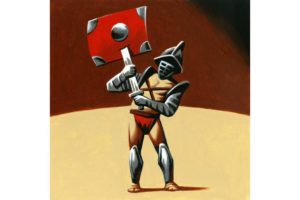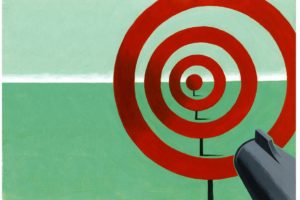As the Reformation passes a milestone, a look at a key weapon of change

ILLUSTRATION: THOMAS FUCHS
The Reformation began on Oct. 31, 1517, when Martin Luther, as legend has it, nailed his “95 Theses” to a church door in Wittenberg, Germany. Whatever he actually did—he may have just attached the papers to the door or delivered them to clerical authorities—Luther was protesting Catholics’ sale of “indulgences” to give sinners at least partial absolution. The protest immediately went viral, to use a modern term, thanks to the new “social media” of the day—the printed pamphlet.
The development of the printing press around 1440 had set the stage: In the famous words of the German historian Bernd Moeller, “Without printing, no Reformation.” But the pamphlet deserves particular recognition. Unlike books, pamphlets were perfect for the mass market: easy to print and therefore cheap to buy. Continue reading…







